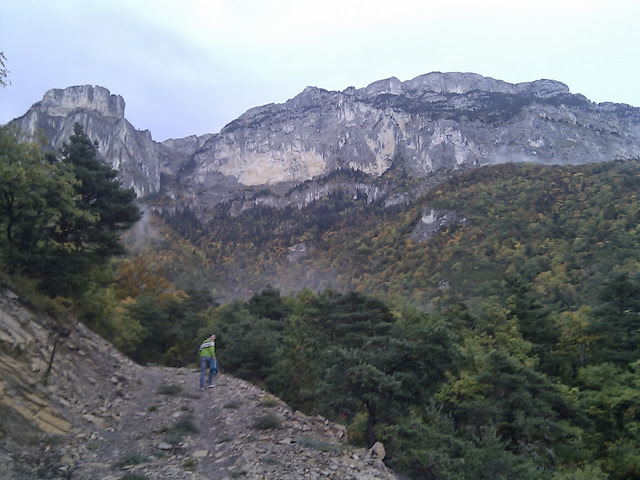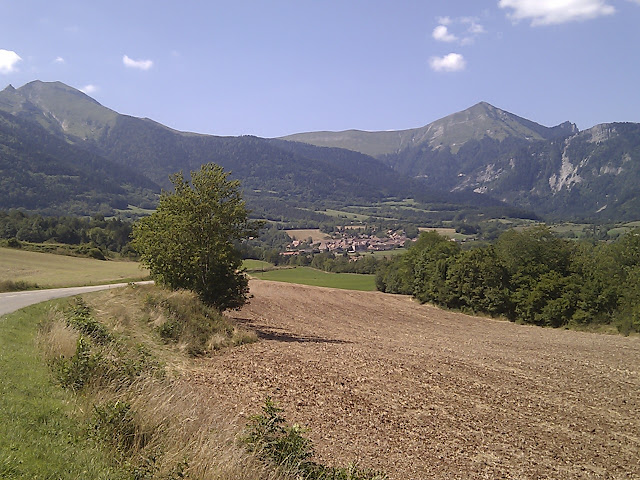Anyway, some routes cycled this time.
Firstly a rather hilly one cycled with Arved: two hardish cols (Col de la Chaudière and Col de Pennes), and though only 72 miles, Ridewithgps clocks 12,000ft of climbing. Even if that is an overestimate, it was a properly tiring ride, and the climb to the Col de Pennes via the longer southerly route was taxing, though really worth it for the amazing scenery it goes through. Incidentally, not one car passed us from the Col de Lescou to the Col de Pennes, 20 miles in all.
http://ridewithgps.com/routes/3611751
Secondly, a short route round the Vercors plateau. Three highlights: the climb and descent to/from the Col de Rousset (a perfect gradient in both directions, which took me 57 minutes up and 25 minutes down); the Grands Goulets, the most bonkers balcony road you're ever likely to find; and the lush meadows spread out between the mountains of the plateau.
http://ridewithgps.com/routes/3611827
Our one aborted ride was going to go over the Col de Grimone and back via the Col de Menée (similar, in reverse, to my ride to Mens in August), but the Col de Menée was closed, and given the windiness (gusts up to 60km/h) Arved & I returned via the unexpectedly amazing Cirque d'Archiane.
Photos below from the three rides.
 |
| Arved at the Col de la Chaudière |
 |
| One of the Trois Becs, from the Col de la Chaudière |
 |
| Les Grands Goulets |
 |
 |
| On the road back to St Agnan-en-Vercors |
 |
| A salamander outside my house |
 |
| Riding done, the Super Six is put to bed. |

















































